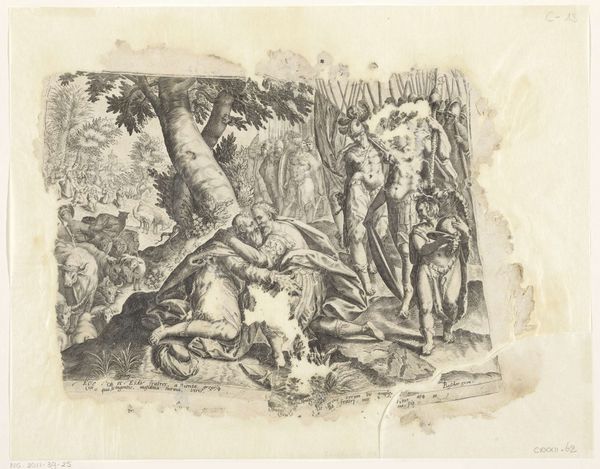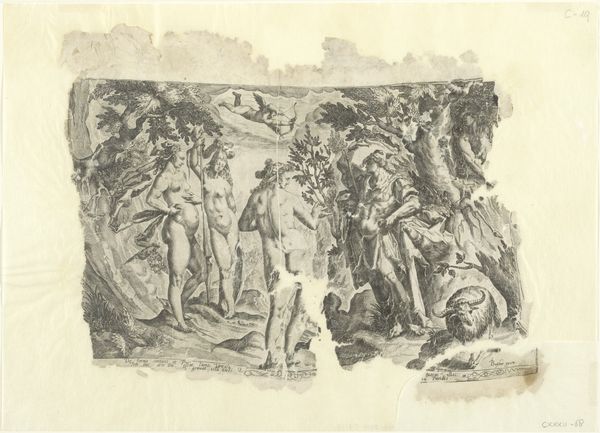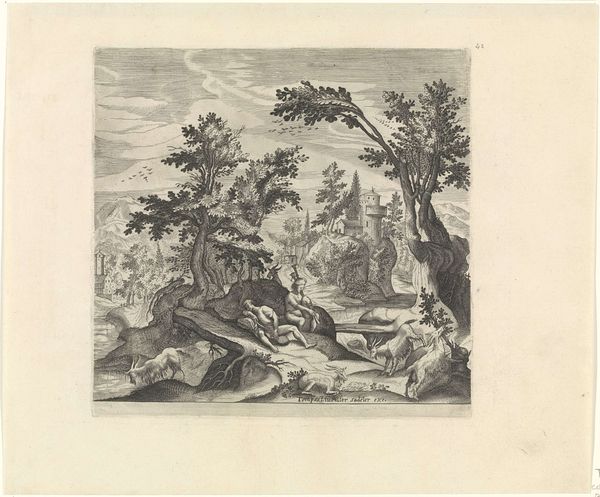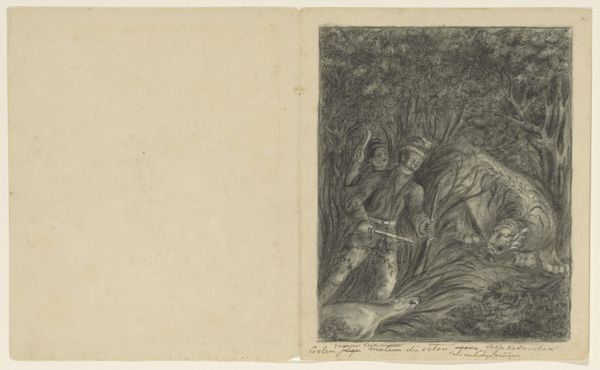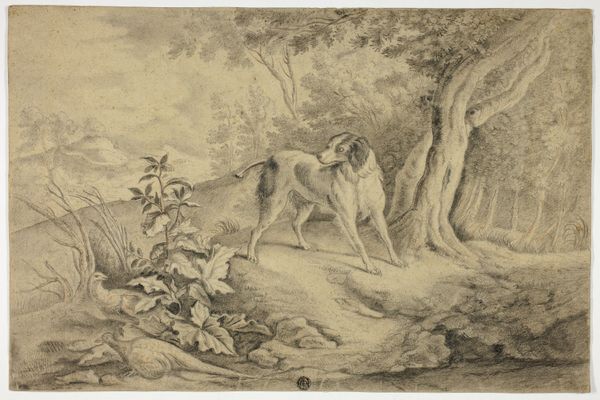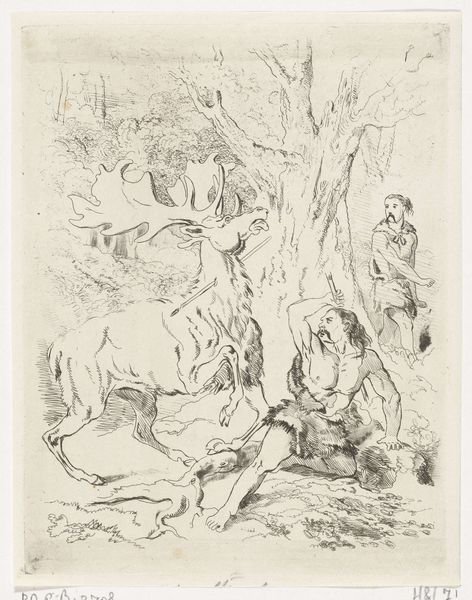
drawing, paper, ink, engraving
#
drawing
#
ink drawing
#
narrative-art
#
mannerism
#
figuration
#
paper
#
ink
#
history-painting
#
engraving
Dimensions: height 337 mm, width 388 mm
Copyright: Rijks Museum: Open Domain
Curator: Welcome. Before us hangs "The Reconciliation of Jacob and Esau," an engraving rendered in ink on paper between 1580 and 1596, attributed to Zacharias Dolendo. It’s held here at the Rijksmuseum. Editor: My first impression is the intricacy. Even in its damaged state, you can see the density of lines Dolendo used, almost obsessively. It’s almost like he’s sculpting with ink. Curator: Indeed. It's a masterful demonstration of Mannerist printmaking, typical of the era's intricate and highly stylized forms. Note how Dolendo uses line and shadow to dramatize the moment, heightening the emotional impact of the reunion. The choice of subject, from Genesis, aligns with the broader interest in biblical narratives that were so popular in Northern Europe during that time, and especially in a period of religious reformation and conflict. Editor: Absolutely. I'm drawn to how the scene reflects the means of production in printmaking: the layered complexity of the lines is really what delivers that emotional weight. The lines are physical labor, and they make the figures weighty too. You can also feel the distribution possibilities inherent in printmaking, this scene of reconciliation circulated widely to spread an idea of, well, reconciliation. Curator: Exactly, and that idea of wide circulation emphasizes the social context as well as the material one. It’s not merely about the technical skill, which is undoubtedly present, but also about its purpose in a society grappling with themes of forgiveness and understanding in times of tension. Editor: But beyond the social message and the narrative, notice how the figures occupy space. Jacob and Esau's embrace—how tightly their forms knit together. You can see it was skillfully and painstakingly rendered; not just for devotion but a display of craftsmanship. Curator: Yes, the composition leads the eye through the image— from the left to right through landscape elements. This speaks to a broader interest in naturalism even within a highly stylized context. Editor: Right, the means, in this case drawing and the ability to replicate via engraving and dissemination through ink on paper, meet the message: Can this image reach a wide enough audience, again and again, to make reconciliation—among a potentially limitless population of viewers—not just a dream but something tangible? Curator: In that regard, this piece demonstrates how social and political motivations directly inform the choices of an artist in a very tumultuous time. The labor and method enabled the message. Editor: And by grappling with these nuances, perhaps we, too, can reach a new level of understanding – a sort of modern day "reconciliation," if you will, with history and art.
Comments
No comments
Be the first to comment and join the conversation on the ultimate creative platform.
